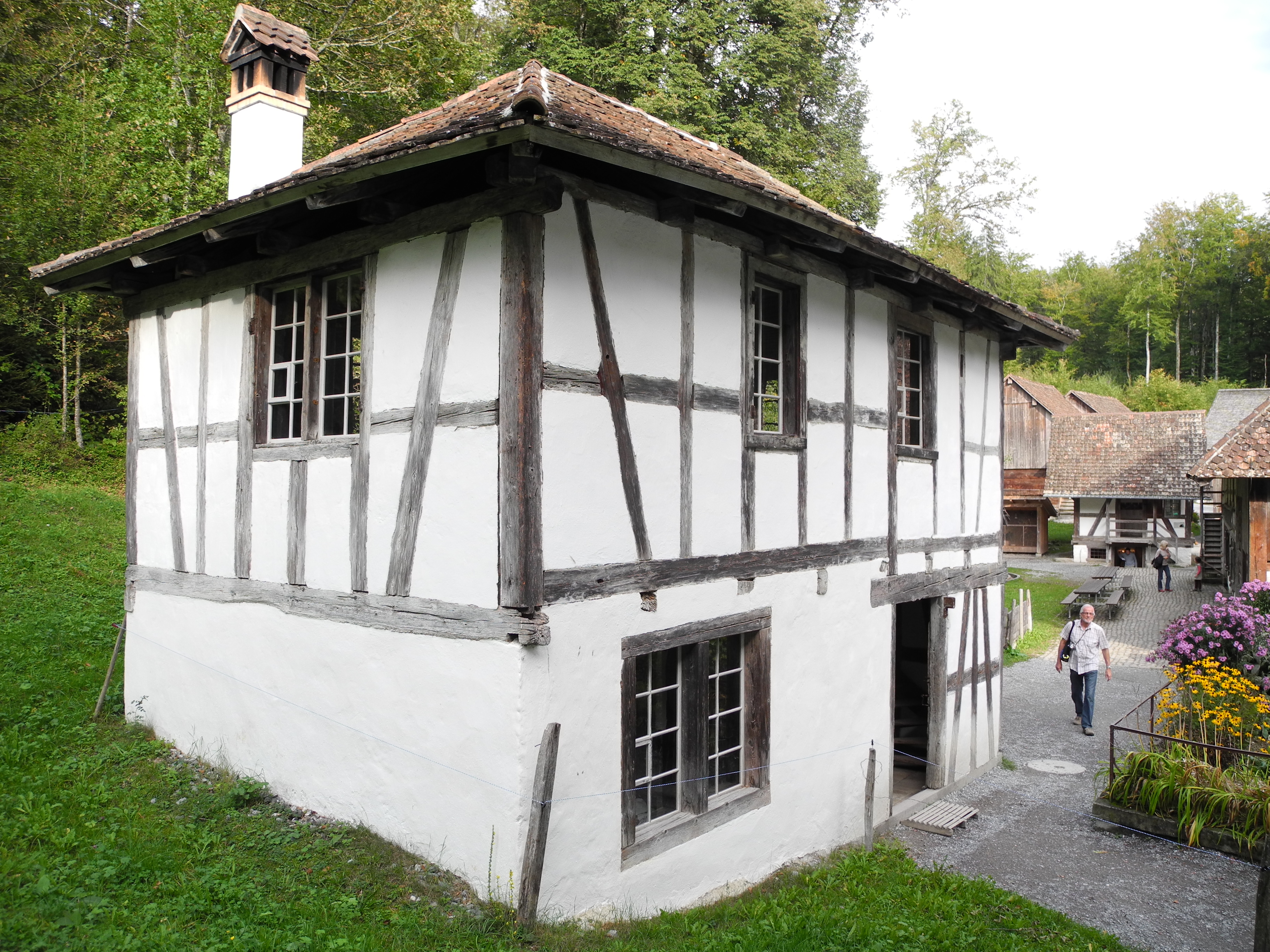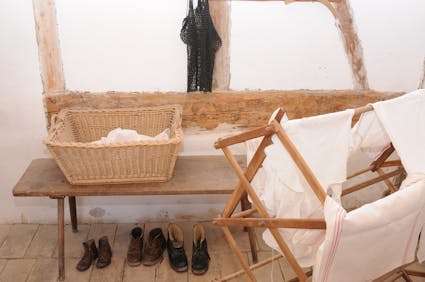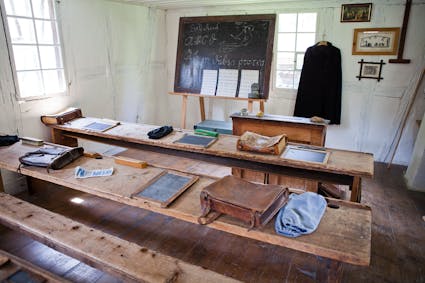612 – Public Laundry from Rüschlikon ZH, 1750–1800
This elegant half-timber structure with a gently swooping hip roof had diverse jobs to fulfil. Initially it was a store house. Then it was repeatedly altered.

Multifunctional
This elegant half-timber structure with a gently swooping hip roof had diverse jobs to fulfil. Initially it was a store house. Then it was repeatedly altered. Around 1900 there was a wash kitchen on the ground floor, yet other work was also done here.

Wash Day
On washday the laundry was placed in a large wooden tub. A sheet was laid over it which contained wood ash, preferably from the wood of ash trees. Then water was boiled up and poured over the ashes. The water was collected at the outlet of the tub, reheated and poured over again. The ashes leached a lye that loosened grease and dirt. Now the laundry goods could be rinsed clean in a laundry trough. In dialect the wash was called ‘buuche’ (in eastern Switzerland also ‘seechte’), and the washhouse was called ‘Buuch(er)huus’. There was a further way to get the wash clean: stone wash pavilions, where the textiles were beaten against a hard surface. The public laundering pavilion from Bodio (852) provides evidence of this method of laundering common in Central Switzerland and in the south.

Wash or Teach?
In rural regions there were buildings whose appearance did not change, yet their interiors were adapted to changing needs. Such small buildings for washing, slaughtering, drying, baking or distilling or any combination had to be flexible: in the course of the seasons (or even weeks) nearly any need might arise. Other buildings were altered drastically from decade to decade and adapted to new purposes. Some were even turned into schoolrooms.

Ballenberg
Swiss Open-Air Museum
Museumsstrasse 100
CH-3858 Hofstetten bei Brienz
Company holidays
24 December 2025 to 11 January 2026
Opening hours Administration
3 November 2025 to 8 April 2026
From Monday to Friday
8.30 am to 11.30 am
1.30 pm to 4.30 pm
Opening hours
9 April to 1 November 2026
10 am to 5 pm daily